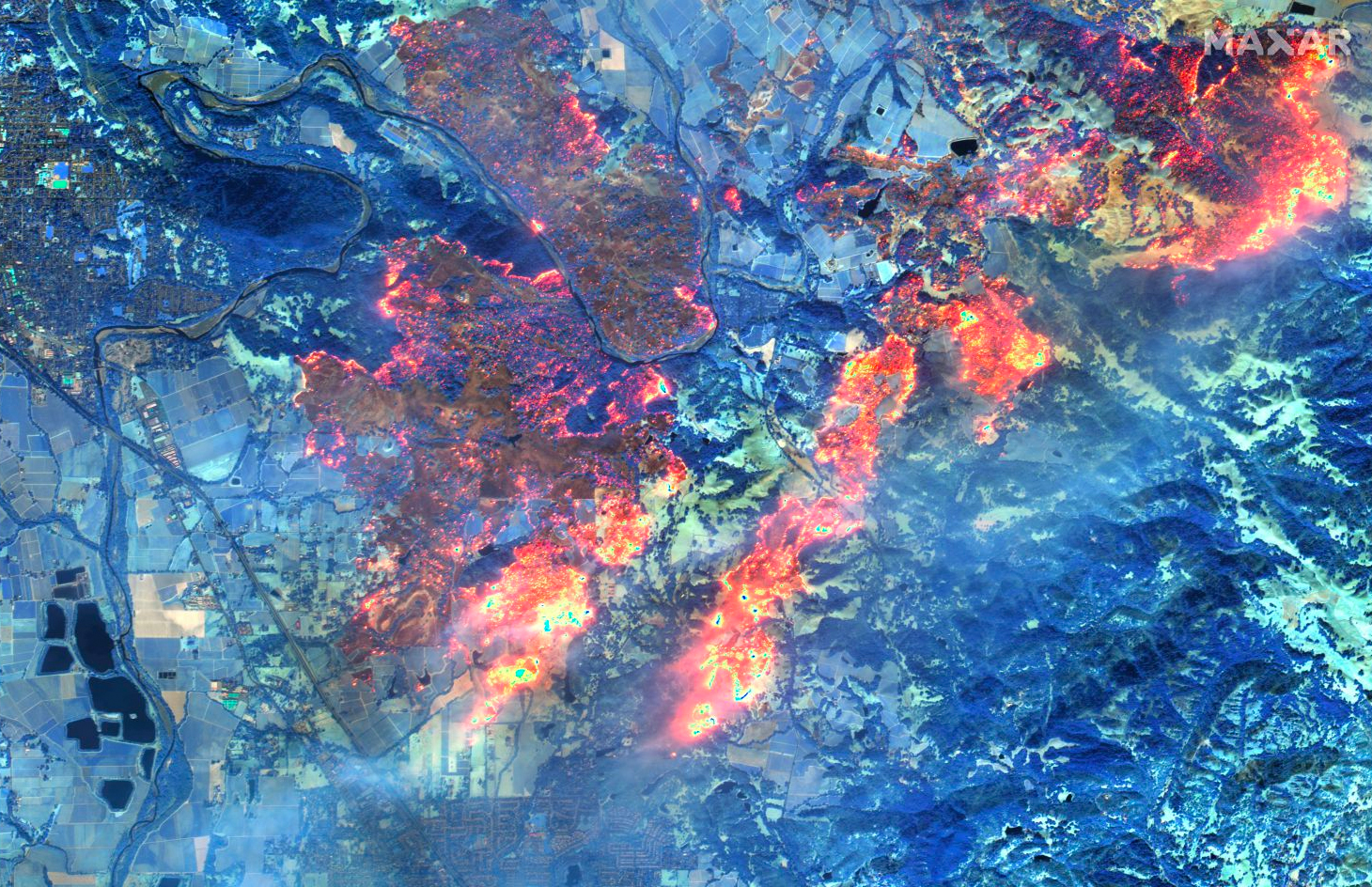NASA Tracks Diablo Winds Powering Massive Kincade Wildfire in California
Gusting winds in northern California are helping the spread of the Kincade fire, as shown in a new animation from NASA. Meanwhile, Maxar Technologies captured infrared images the fire using its suite of Earth-observing satellites.
The winds, which are known as Diablo winds, have reached speeds as high as 96 miles (150 kilometers) an hour. This fuels the fires, making it more difficult for firefighters to keep them under control. The fire grew by nearly 48,000 acres (19,400 hectares) between Oct. 26 and Oct. 28 alone. More than 2,000 people have evacuated from the blaze, which has consumed more than 120 structures.
NASA's new animation visualizes data captured between Oct. 20 and Oct. 28, showing strong gusts in yellow and weak winds in purple. This data comes from the Goddard Earth Observing System Model 5 (GEOS-5), a weather model that NASA is experimenting with to better understand weather around the world. This model takes in data from 30 sources, such as satellites, ships, aircraft and buoys.
Related: Astronaut Sees Devastating California Wildfires from Space (Photos)

"The Diablo winds tend to originate in the Great Basin region of Nevada and Utah," NASA said in a statement. "The winds are fueled by high-pressure air moving toward lower-pressure areas and lower elevations near the coast. On the way, the air masses pass over California’s mountain ranges and down through valleys, which causes the air to compress, heat up, and dry out. These hot, dry, gusty winds can exacerbate fire conditions and carry embers to the next patch of land."
Maxar's images show the fires burning on Oct. 27, courtesy of a type of infrared imaging (commercially unique shortwave infrared) that preferentially shows warmer and cooler areas in a particular zone. In a statement, Maxar said this type of imagery is useful for wildfire imaging, as the images tend to cut out obscuring smoke. Also, the shortwave infrared imagery easily shows which vegetation is burnt.
- Satellites Track California's Devastating Kincade Wildfire from Space
- After Record-Breaking Wildfire Season, California Shows Nine New Scars
- Scale of California's Deadly Camp Fire Shown in Satellite Photos
Follow Elizabeth Howell on Twitter @howellspace. Follow us on Twitter @Spacedotcom and on Facebook.
Get the world’s most fascinating discoveries delivered straight to your inbox.

Elizabeth Howell was staff reporter at Space.com between 2022 and 2024 and a regular contributor to Live Science and Space.com between 2012 and 2022. Elizabeth's reporting includes multiple exclusives with the White House, speaking several times with the International Space Station, witnessing five human spaceflight launches on two continents, flying parabolic, working inside a spacesuit, and participating in a simulated Mars mission. Her latest book, "Why Am I Taller?" (ECW Press, 2022) is co-written with astronaut Dave Williams.
 Live Science Plus
Live Science Plus






